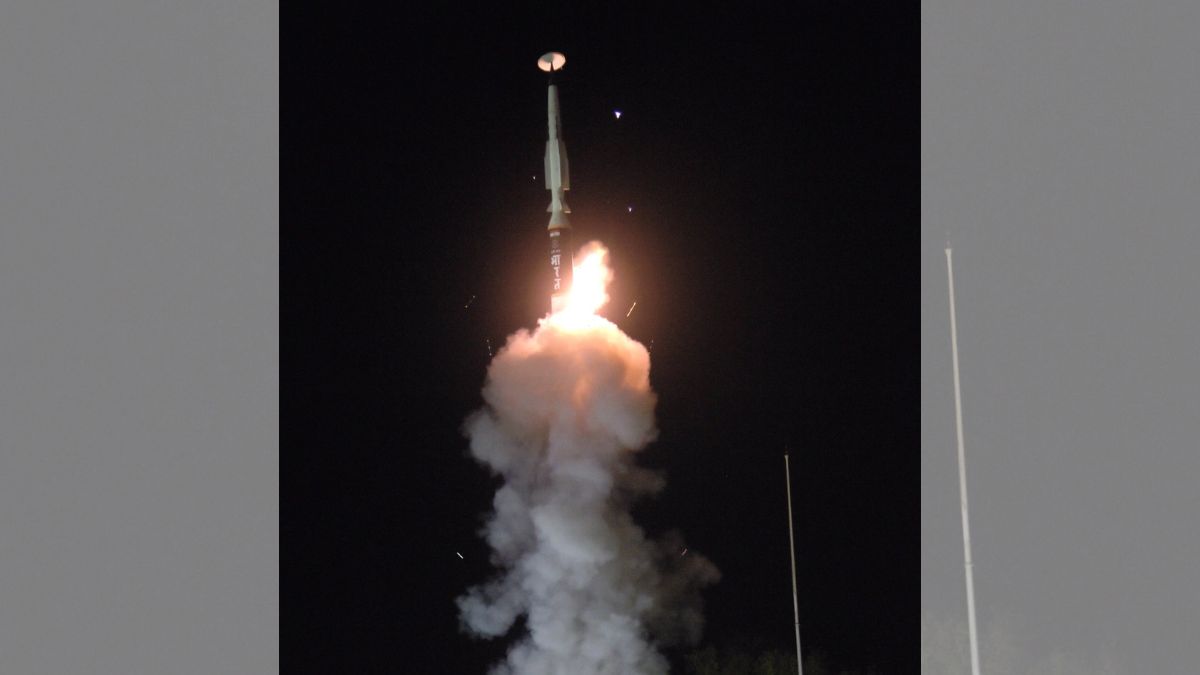In a “historic” feat, India successfully tested a long-range hypersonic missile on Sunday (November 17). This puts the country in the league of a select few nations with the advanced technology.
The missile, which was test-fired off the coast of Odisha, can carry several payloads for ranges exceeding 1,500 km for the armed forces, the government said in a statement.
Taking to X, Defence Minister Rajnath Singh wrote, “India has achieved a major milestone by successfully conducting flight trial of long-range hypersonic missile from Dr APJ Abdul Kalam Island, off-the-coast of Odisha. This is a historic moment and this significant achievement has put our country in the group of select nations having capabilities of such critical and advanced military technologies.”
India has achieved a major milestone by successfully conducting flight trial of long range hypersonic missile from Dr APJ Abdul Kalam Island, off-the-coast of Odisha. This is a historic moment and this significant achievement has put our country in the group of select nations… pic.twitter.com/jZzdTwIF6w
— Rajnath Singh (@rajnathsingh) November 17, 2024
Let’s take a closer look.
India’s first long-range hypersonic missile
The long-range hypersonic missile is built domestically by Defence Research and Development Organisation (DRDO), along with laboratories of the Dr APJ Abdul Kalam Missile Complex, Hyderabad and other industry partners.
“The missile was tracked by various range systems, deployed in multiple domains. The flight data obtained from down range ship stations confirmed the successful terminal manoeuvres and impact with high degree of accuracy,” the Defence Ministry said in a statement.
The @DRDO_India has successfully conducted a flight trial of its long range hypersonic missile on 16th Nov 2024 from Dr APJ Abdul Kalam Island, off-the-coast of Odisha.
— रक्षा मंत्री कार्यालय/ RMO India (@DefenceMinIndia) November 17, 2024
Raksha Mantri Shri @rajnathsingh has congratulated DRDO, Armed Forces and the Industry for successful flight… pic.twitter.com/wq7yM2YS9f
Impact Shorts
More ShortsWith this, India is part of the elite group of countries possessing long-range hypersonic missiles. As per the Atlantic Council, the United States, China and Russia have displayed hypersonic capabilities.
Other countries like France, Germany, Japan, Australia, Iran, and Israel are also developing hypersonic missile systems.
What are hypersonic missiles?
Hypersonic weapons can fly at speeds more than five times the speed of sound, or Mach 5.
These hi-tech weapons fly lower and are harder to detect than ballistic missiles. They reach the targets faster and can change course during flight.
There are two types of hypersonic weapons : Hypersonic glide vehicles (HGV) and Hypersonic Cruise Missiles (HCM).
Like regular ballistic missiles, HGVs are launched from a rocket. After this, the glide vehicle separates from the rocket and “glides” at the speed of at least Mach 5 toward a target, as per Voice of America (VOA).
The HCMs use high-speed, air-breathing engines called scramjets after acquiring their target.
Why hypersonic weapons matter
Hypersonic missiles are a “game-changer” for national security, according to the defence equipment manufacturer Lockheed Martin.
There is a race among countries to develop such weapons as their manoeuvrability and hypersonic speeds are an advantage, helping these missiles evade nearly any defence system at present.
“It doesn’t matter what the threat is. If you can’t see it, you can’t defend against it,” General John Hyten, the former vice chairman of the US Joint Chiefs of Staff, said in Washington in January 2020.
Ballistic missiles can also travel at hypersonic speeds of at least Mach 5. However, they have a predictable arc and are detectable by long-range radars.
As per an article in the Centre for Power Studies, “Hypersonic technology differs from ballistic missiles as the former does not follow a ballistic trajectory and can manoeuvre on the way to their target. Hypersonic weapons have the potential to avoid detection because of their speed, manoeuvrability, and low altitude of flight.”
But hypersonic weapons come with their own challenges. As per the Lockheed Martin website, developing such a system means “overcoming a number of difficult engineering and physics challenges”, such as heat created due to friction and air resistance.
The weapon’s high speed demands “an incredible degree” of precise manoeuvrability.
“Basic operations, like communications, become a significant challenge during hypersonic flight. A system must maintain connectivity to operators and decision-makers through communications and sensor systems,” the website noted.
With inputs from agencies


)

)
)
)
)
)
)
)
)



